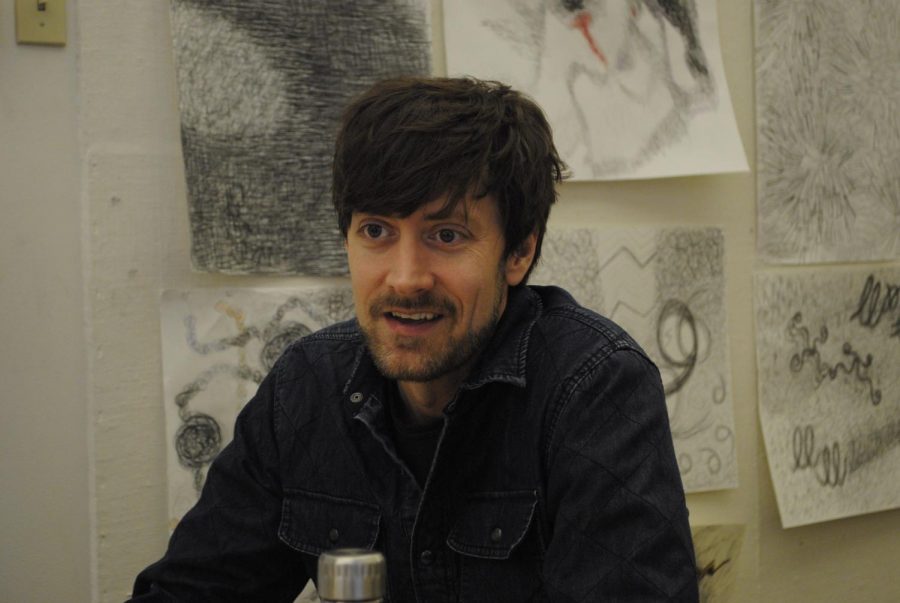Lack of art on campus could impact students
Paintings, creative works rarely found in WSU buildings; interaction with pieces beneficial for various professions
ALYSSA STANFIELD | THE DAILY EVERGREEN
Joe Hedges, an assistant professor of painting and intermedia, tells how art, or lack thereof, can affect students at WSU on Monday morning in the Fine Arts Center. He said student artwork helps address the issue of noticeably missing creativity.
January 31, 2019
After almost three years of living in Pullman, a question has come up over and over again: where is the art?
Looking around in lecture halls, classrooms and labs, there is a blatant lack of visual stimulation around us. While the CUB may be full of televisions and murals advertising one thing or another, the sheer absence of multimedia work on campus is astounding.
“Seeing something on a screen is just not the same experience as being in front of a work and feeling that kind of aura,” said Joe Hedges, an assistant professor of painting and intermedia.
From Todd Hall to The Spark: Academic Innovation Hub, blank white walls stretch across most of the rooms. Strangely, in the hunt for any semblance of a painting, none were to be found. What is stranger is nobody seems to notice.
“Aside from my performing arts classes, the walls are very bland,” said Drew Boettner, a third-year mechanical engineering major. “Art hasn’t really been in any of my lectures unless it is a designated fine arts course.”
“There’s a dearth of art on this campus,” said Thom Brown, a professor of drawing and painting at WSU. “It needs an infusion and a real focus on it. It’s just not there and I don’t know why it is.”
In the Fine Arts Building, students’ drawings plaster every inch of wall space available. People can see
others through bay windows listening to music and painting, as they take part in a community that surrounds itself with easels and poster board.
While there isn’t a lot of importance placed into putting Van Gogh’s work on walls in Fulmer Hall lab rooms, it still poses the question: what do fine arts have to do with business or STEM?
If pilots lacked depth in their visual field, they would not be allowed to fly. Getting familiarized with art can have many hidden ties to other professions that we may not realize.
“Being around art can be very helpful to students,” Brown said. “It can help develop a visual intelligence. For instance, surgeons have to be very spatial.”
But how does the noticeably lacking artwork in Pullman hurt students?
“I think there’s a kind of homogeneous visual culture on campus that’s largely centered around the Cougs, the Crimson logo and athletics, which is a big part of what happens here,” Hedges said. “It’s difficult to see contemporary art in Pullman, or even modernist art. One way we solve that in the Fine Arts Building is by making a lot of work.”
Hedges’ painting class is currently working on five-foot square expressionist paintings, which will later be shown in a gallery in the Fine Arts Building.
While studying art through PowerPoints and books is helpful to enhancing our understanding of media, it just isn’t the same as standing in front of a 200-year-old painting.
“Art is super critical — the real thing, not just reproductions — to deepening students’ experience with art and understanding the art in itself,” Brown said. “If you have a dedication to the culture on campus and the school also has a dedication to that, it makes a huge difference.”












